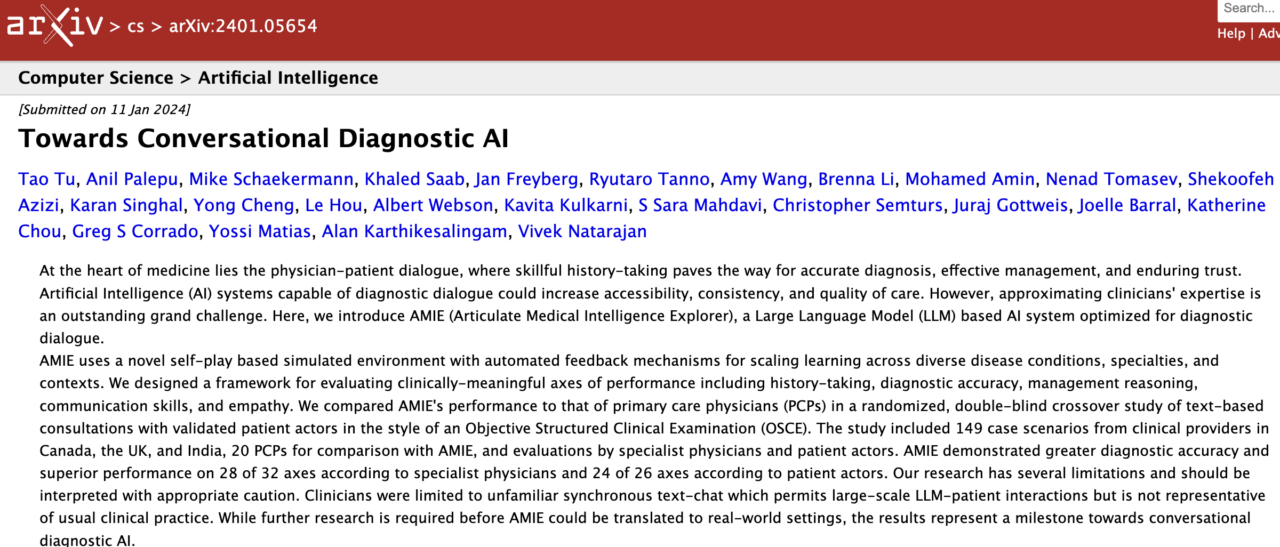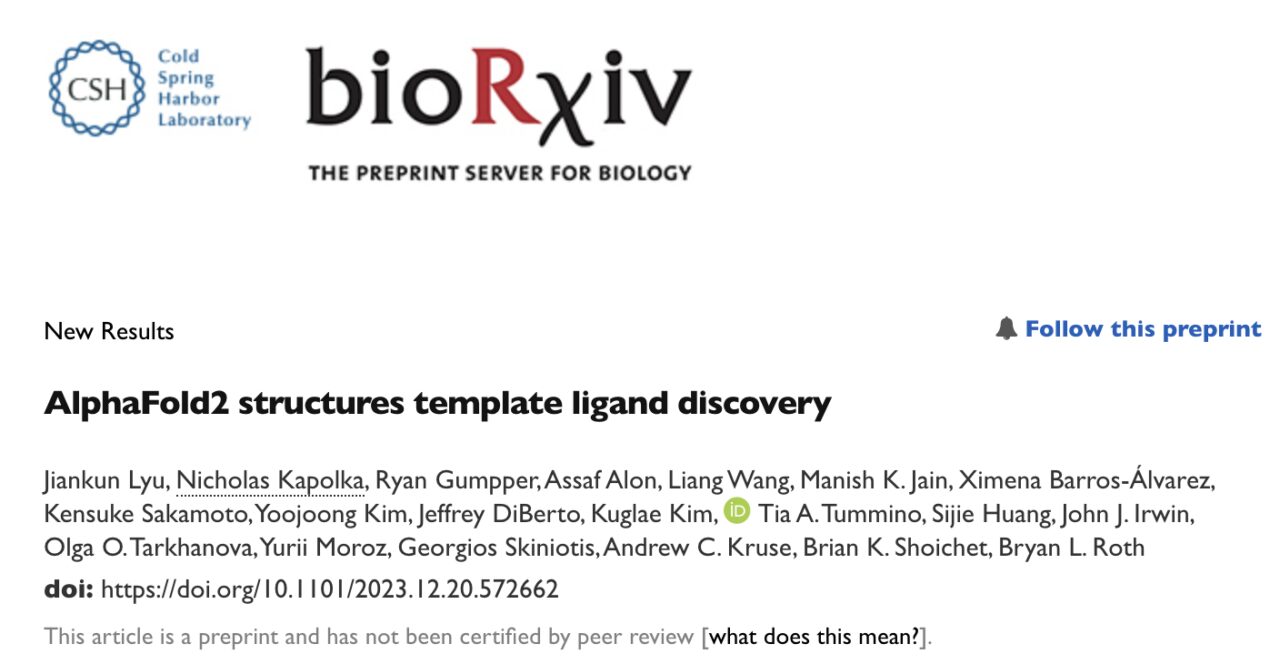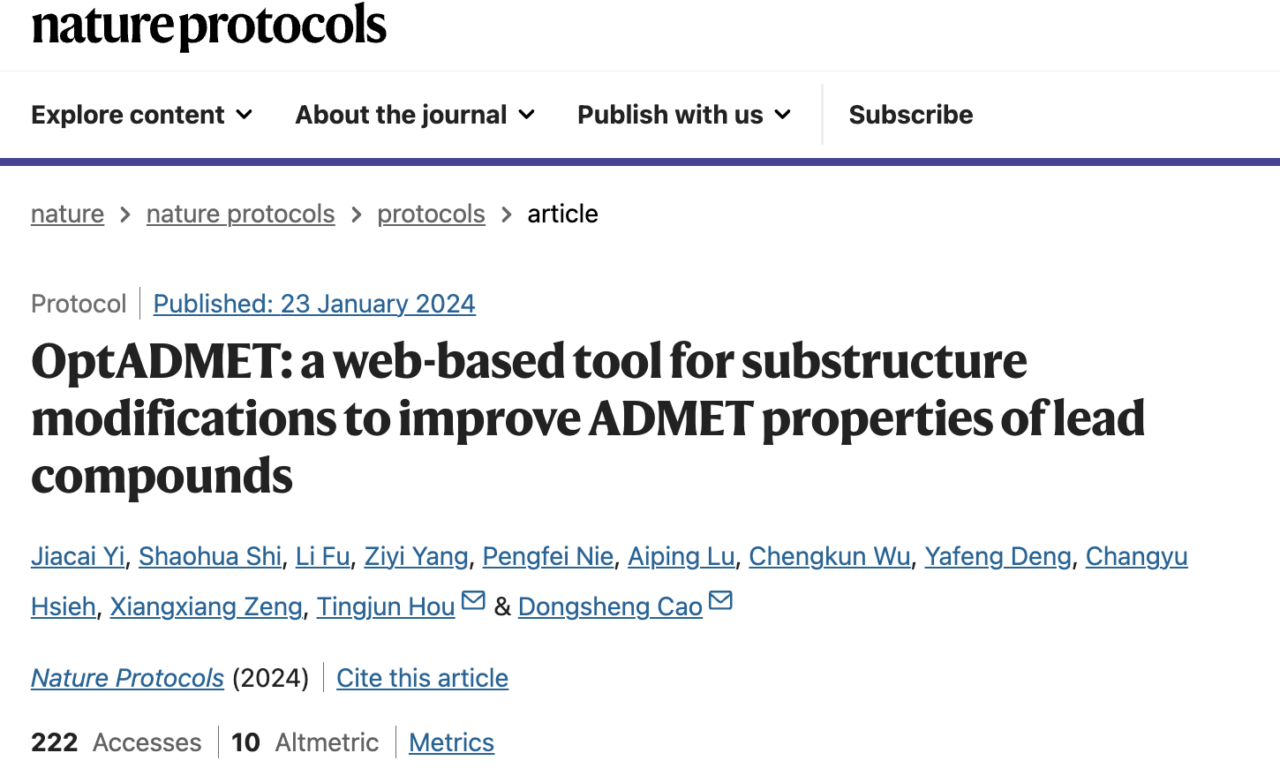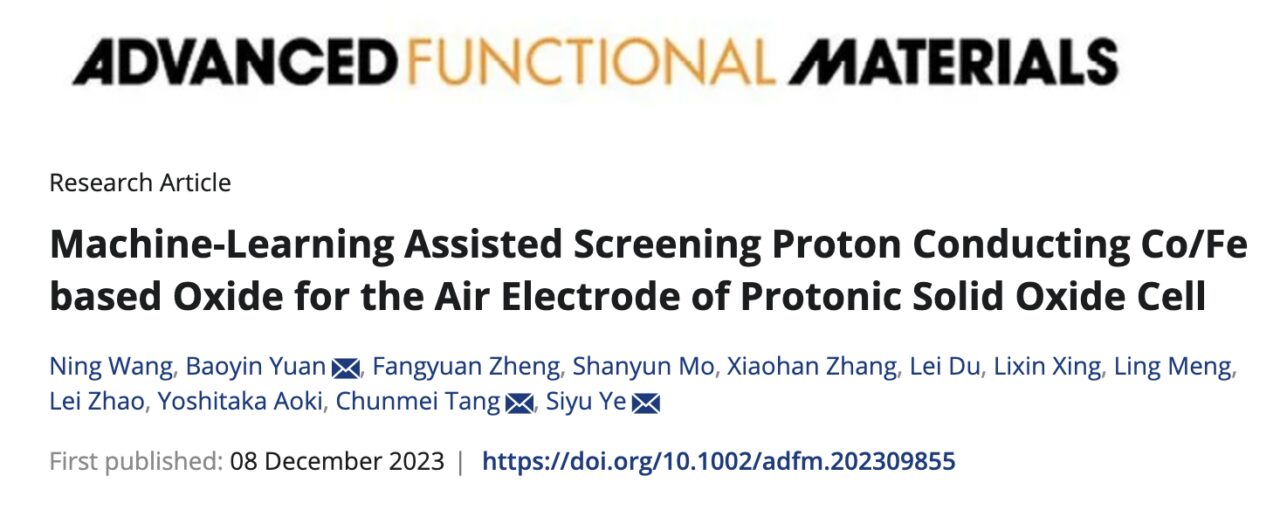【ScienceAI Weekly】AI+biocondensate Startup Announces Layoffs of 15%; Ministry of Science and Technology Clarifies AIGC Red Lines in Scientific Research; iFlytek Medical Submits Listing to Hong Kong Stock Exchange

AI for Science New achievements, new trends and new perspectives——
* The world's first company to apply biomolecular condensates to drug discovery announced the elimination of 18 jobs
* Google DeepMind releases AlphaGeometry
* Evaxion Biotech announces the use of AI to develop customized cancer vaccines
* iFlytek Medical officially submits its application to the Hong Kong Stock Exchange
* Chongqing University-Baidu Intelligent Cloud Joint Innovation Center was established
See below for details~
Company News
Google DeepMind releases AlphaGeometry
AlphaGeometry was developed by the Google DeepMind team and researchers from New York University. It combines a neural language model with a symbolic deduction engine to solve complex geometry problems at a level close to that of humans. In a benchmark test of 30 geometry problems from the International Mathematical Olympiad (IMO), AlphaGeometry solved 25 of them in a given time, while the previous SOTA "Wu method" solved 10 problems, and the human IMO gold medalist could solve an average of 25.9 problems.
Evaxion Biotech announces use of AI to develop customized cancer vaccines
Recently, Evaxion Biotech announced that it has developed a customized cancer vaccine by targeting a new tumor antigen identified by AI (called endogenous retrovirus, ERV). After the news was released, Evaxion's stock price soared by 113.43%. Founded in 2008, Evaxion is an artificial intelligence company dedicated to building a target discovery platform. It currently has three artificial intelligence-driven immunology platforms, namely:
* PIONEER:It can accurately and effectively identify patients' neoantigen targets in a personalized manner, and identify immunogenic neoantigen epitopes from DNA and mRNA sequencing data within 24 hours.
* EDEN:Used for bacterial infectious diseases, it can quickly identify antigens that trigger bacterial infectious diseases for vaccine development.
* RAVEN: Rapidly identify vaccine candidates against existing, emerging and mutated viral diseases while triggering effective B cell and T cell responses. Vaccines against viral diseases are challenged by reduced efficacy and evasion by mutated viruses.
AI + Biocondensate Startups Dewpoint Therapeutics Staff reorganization
As the world's first company to apply biomolecular condensates to drug discovery, Dewpoint has raised a total of $287 million. However, Dewpoint Therapeutics, founded in 2018, has not had a single pipeline enter the clinic. Since the development of drugs targeting biomolecular condensates is still in its infancy, the company has to spend a lot of time and energy on biological validation, which has also led to slow clinical development progress. Not long ago, the company announced that it would cut 18 positions, accounting for about 15% of the total number of employees.
iFlytek Medical officially submitted its application to the Hong Kong Stock Exchange, ranking first in China's medical artificial intelligence industry
According to the Hong Kong Stock Exchange's disclosure on January 26, iFlytek Medical Technology Co., Ltd. submitted its application for listing on the main board of the Hong Kong Stock Exchange, with Huatai International, GF Capital (Hong Kong) and CCB International as joint sponsors. iFlytek Medical was founded in 2016, and its intelligent medical assistant has successfully passed the National Medical Practitioner Qualification Examination (Comprehensive Written Examination). At present, the intelligent medical assistant has covered more than 400 districts and counties in more than 30 provinces across the country, providing more than 740 million AI-assisted diagnosis suggestions and more than 280 million electronic medical record standardization suggestions.
Chongqing University-Baidu Intelligent Cloud Joint Innovation Center was established
Recently, Baidu and Chongqing University signed a strategic cooperation agreement at the Chongqing University Shapingba Campus and unveiled the Chongqing University-Baidu Intelligent Cloud Joint Innovation Center. It is reported that the Chongqing University-Baidu Intelligent Cloud Joint Innovation Center focuses on cutting-edge key areas such as mountain autonomous driving, large model applications, and information security. The two parties will jointly build an AI For Science scientific research computing platform, deepen the integration of industry, academia, and research, and promote the two-way transformation of scientific and technological achievements.
Policy Specifications
The Supervision Department of the Ministry of Science and Technology issued the "Guidelines on Responsible Research Conduct (2023)"
The Guidelines for Responsible Research Conduct (2023) states in the research topic selection and implementation section that the application materials of scientific researchers’ research projects should be true, accurate and objective. The same or similar research content should not be used for repeated applications, and others should not be listed as members of the research team without consent. Application materials should not be plagiarized, bought, sold or ghostwritten, and generative artificial intelligence should not be used to directly generate application materials. At the same time,Guidelines” also clearly stipulates that unverified references generated by generative artificial intelligence shall not be used directly.
Tools and Resources
Open Catalyst Project
The Open Catalyst Project is a collaboration between Meta AI’s Fundamental Artificial Intelligence Research (FAIR) division and Carnegie Mellon University’s Department of Chemical Engineering (CMU), which aims to use AI to model and discover new catalysts that can be used for renewable energy storage to combat climate change.
In order to enable more researchers to join the Open Catalyst Project, the team released the Open Catalyst 2020 (OC20) and Open Catalyst 2022 (OC22) datasets for training machine learning models. The datasets contain a total of 1.3 million molecular relaxations and the results of more than 260 million DFT calculations. In addition, the basic models and codes are also open source on Github.
Open source address:
https://github.com/Open-Catalyst-Project
Materials Projects
Materials Projects aims to calculate the properties of all inorganic materials and provide data and related analysis algorithms to every materials researcher free of charge. The ultimate goal of the project is to significantly reduce the time required to develop new materials by focusing on those compounds that are most promising computationally. Currently, it can provide researchers with:
* Pymatgen: An open source Python library for materials analysis, researchers can access the Materials API to further analyze complex materials data sets.
* Crystal Toolkit: An open source web application box for displaying common material data types such as crystal structure, band structure, etc., designed specifically for Python users, allowing users to develop complete web applications without having to learn traditional web technologies.
* FireWorks: Free open source code that can be used to automatically compute any computing resource and supports running high-throughput calculations in large computing centers.
* Atomate: Provides "recipes" for performing complex material calculations, automatically performing a series of interrelated complex calculations with just a few lines of code.
Official website address:
https://next-gen.materialsproject.org/
Scholar Puyu 2.0: A new generation of domestic open source large language model
On January 17, Shanghai Artificial Intelligence Laboratory and SenseTime, together with the Chinese University of Hong Kong and Fudan University, officially released the next-generation large language model Scholar Puyu 2.0 (InternLM2), which has been trained with 2.6 trillion tokens of high-quality corpus and includes 7B and 20B parameter specifications, as well as base and dialogue versions. In terms of mathematical reasoning, the 20B parameter model outperformed ChatGPT (GPT-3.5) in GSM8K and MATH evaluations.
Open source address:
https://github.com/InternLM/InternLM
Pu Ke Chemical: Open Source Science Big Model
On January 26, the Shanghai Artificial Intelligence Laboratory released the first open-source scientific model, ChemLLM. By injecting massive amounts of chemical professional data, the model gained the knowledge and ability to understand and handle chemical-related professional tasks. At the same time, researchers found that as the chemical ability was acquired, the mathematical and scientific disciplines and reasoning abilities of the model were also enhanced.
Open source address:
https://huggingface.co/AI4Chem/ChemLLM-7B-Chat
Research results
AMIE: A large-scale diagnostic dialogue model based on self-game
Towards Conversational Diagnostic AI

* Source: arXiv
* Field: Healthcare
* Author: Google Research and Google DeepMind
AMIE (Articulate Medical Intelligence Explorer) uses a novel self-play-based simulation environment with an automated feedback mechanism to scale learning across different disease conditions, specialties, and contexts. Researchers compared AMIE's performance with that of primary care physicians, who rated AMIE as having higher diagnostic accuracy and better performance on 28 of 32 indicators.
Read the original article:
https://arxiv.org/abs/2401.05654

* Source: bioRiv
* Field: Biomedicine
* Author: Research team from University of California
The researchers conducted prospective testing of the unrefined AF2 model, comparing the experimental hit rate and affinity of large libraries docked with the AF2 model and the same screening results for the same receptor experimental structure. After docking the AF2 model against the 5-HT2A receptor, the researchers discovered a cryo-EM structure of a more effective and selective ligand. The results show that the AF2 model can sample conformations relevant to ligand discovery, thereby greatly expanding the scope of application of structure-based ligand discovery.
Read the original article:
https://www.biorxiv.org/content/10.1101/2023.12.20.572662v1
OptADMET: for improving the ADMET properties of lead compounds
OptADMET: a web-based tool for substructure modifications to improve ADMET properties of lead compounds

* Source: Nature Protocols
* Field: Biomedicine
* Author: Zhejiang University and Xiangya School of Pharmacy, Central South University
OptADMET is an online integrated platform that provides chemical transformation rules for 32 ADMET properties (absorption, distribution, metabolism, excretion and toxicity) and uses past experimental data for lead optimization. At the same time, OptADMET can also provide ADMET spectra of all optimized molecules in the query molecule, predict ideal substructure conversions, and conduct subsequent verification of candidate drugs.
Read the original article:
https://www.nature.com/articles/s41596-023-00942-4
Interpretable Models Based on Graph Learning
An interpretable model based on graph learning fordiagnosis of Parkinson's disease with voice-related EEG

* Source: npj Digital Medicine
* Field: Healthcare
* Author: Shenzhen Institutes of Advanced Technology, Chinese Academy of Sciences and The First Affiliated Hospital of Sun Yat-sen University
Using the abnormal EEG features of speech and motor tasks in Parkinson's disease, the researchers proposed an interpretable graph signal processing-graph convolutional network (GSP-GCNs) model. By using the EEG data of the speech fundamental frequency modulation task and mining the neural markers of the large-scale brain functional network of Parkinson's disease patients, they achieved high-precision intelligent diagnosis of Parkinson's disease.
Read the original article:
https://www.nature.com/articles/s41746-023-00983-9
Machine learning model based on XGBoost algorithm: for screening of P-SOC air electrodes
Machine-Learning Assisted Screening Proton Conducting Co/Fe based Oxide for the Air Electrode of Protonic Solid Oxide Cell

* Source: Advanced Functional Materials
* Field: Materials Chemistry
* Author: Guangzhou University
Based on the XGBoost machine learning model, the research team screened P-SOCs air electrodes with element structure as input, and successfully screened out a high-efficiency air electrode material LCN91 for P-SOCs based on machine learning prediction results and density functional theory (DFT) calculations, whose activation energy is comparable to that of well-known air electrodes.
Read the original article:
https://onlinelibrary.wiley.com/doi/10.1002/adfm.202309855
Upcoming Events
The 23rd Bio-IT World will open on April 15
Bio-IT World will be held in Boston from April 15 to 17, 2024. Among the 10 sessions consisting of dozens of conferences, three sessions will focus on artificial intelligence, including generative artificial intelligence, artificial intelligence for drug discovery and development, and artificial intelligence for oncology, precision medicine, etc.
Among them, 6 in-depth seminars also involved FAIR data, knowledge graphs, quantum computing, automation, digital laboratories and robotics, digital biopharmaceuticals, and digital upgrades of clinical development and clinical trials. The themes of the 9 pre-conference workshops were generative AI, data science, semantic management technology and processes, large language models and their practical applications at Novartis Pharmaceuticals, digitalization of pharmaceutical R&D, and biomedical digital twins.
Registration link:
https://www.bio-itworldexpo.com/
The above is all the content that "Science AI Weekly" wants to share~
If you have the latest research results, first-hand information about companies, etc. about AI for Science, please leave a message "Revelation".